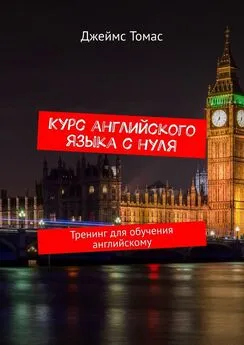Яков Аракин - Практический курс английского языка 2 курс
- Название:Практический курс английского языка 2 курс
- Автор:
- Жанр:
- Издательство:ВЛАДОС
- Год:2005
- ISBN:нет данных
- Рейтинг:
- Избранное:Добавить в избранное
-
Отзывы:
-
Ваша оценка:
Яков Аракин - Практический курс английского языка 2 курс краткое содержание
I - V курсов педагогических вузов.
Цель учебника – обучение устной речи на основе развития необходимых автоматизированных речевых навыков, развитие техники чтения, а также навыков письменной речи.
Практический курс английского языка 2 курс - читать онлайн бесплатно полную версию (весь текст целиком)
Интервал:
Закладка:
chorus; ask your questions.20
XVI. a) Give the idea of the text in English:
Сколько стоит аппендицит?
Бумажка была счетом за удаление у «мистера Стрельникова» аппендицита. Одному из
нас с подобного рода бумагой пришлось столкнуться впервые, и было очень интересно
читать: «Анализ крови — 25 долларов. Плата хирургу за операцию — 200 долларов.
Анестезия — 35 долларов. Плата за каждый день пребывания в госпитале — 200 долларов.
Плата за телевизор — 3 доллара в день». И так далее. Всего расставание с аппендицитом
мистеру Стрельникову стоило 1112 долларов! Сюда входит плата врачу за постановку
диагноза, за удаление ниток из шва...
Если бы мистер Стрельников пожелал продлить пребывание в госпитале до
существующей у нас нормы (семь дней), бумажка счета стала бы вполовину длиннее. Как
гражданин страны, где медицинское обслуживание бесплатное, денег из своего жалованья
мистер Стрельников не платил. Уплатило за него государство. А в больнице он был столько,
20 The first picture should be discussed with the whole group under the teacher's guidance; the other pictures may be discussed m
pans.
сколько бывают американцы, — три дня.
(Стрельников
В.,
Песков Б. Земля за океаном. М., 1975)
Prompts: bill, anaesthesia, to take out the stitch, twice longer.
b) Say what you know about the cost of health service in America, in Russia
and in other countries nowadays.
ХVII. a) Bead and translate the texts below:
1. In Great Britain primary health care is in the hands of family practitioners who work
within the National Health Service. The family practitioner services are those given to patients by
doctors, dentists, opticians and pharmacists of their own choice. Family doctors who are under
contract to the National Health Service have an average about 2,250 patients. They provide the first
diagnosis in the case of illness and either prescribe a suitable course of treatment or refer a patient to
the more specialized services and hospital consultants.
A large proportion of the hospitals in the National Health Service were built in the nineteenth
century; some trace their origin to much earlier charitable foundations, such as the famous St.
Bartholomew's and St. Thomas' hospitals in London.
About 85 per cent of the cost of the health services is paid for through general taxation. The
rest is met from the National Health Service contribution and from the charges for prescriptions,
dental treatment, dentures and spectacles. Health authorities may raise funds from voluntary sources.
(See: "Britain 1983". Lnd., 1983)
2. Nobody pretends that the National Health Service in Britain is perfect. Many doctors
complain that they waste hours filling in National Insurance forms, and that they have so many
patients that they do not have enough time to look after any of them properly. Nurses complain that
they are overworked and underpaid.
3. Many Health Service hospitals are old-fashioned and overcrowded, and, because of the
shortage of beds, patients often have to wait a long time for operations. Rich people prefer to go to
private doctors, or to see specialists in Harley Street, the famous "doctors" street in London. When
these people are ill they go to a private nursing-home, for which they may pay as much as £ 100 a
week. Alternatively, they may hire a private room in an ordinary hospital, for which they will pay
about £ 10 a day.
(Musman R. Britain To-day. Lnd., 1974)
b) Write 10 questions about the facts mentioned in the texts that you find
interesting and discuss them in class.
XVIII. Find some jokes on a medical subject and tell them to your fellow-
students.
XIX. a) Give а very short description of each picture in the Present Tense. Use
prompt words and phrases listed in the Note.
b) Make up a story about the pictures in the Past Tense c) Find a short title to
the story.
Note: сточная труба — sewer; носилки - stretcher; санитарная машина — ambulance;
санитар - ambulance man; операционная operating-room; гипсовая повязка — plaster-bandage.
XX. Film "Mr.Brown's Holiday". Dilm segment 2 "Miss Peggy and the Pussy
Cays" (Canterbury), a) Watch and listen, b) Do the exercises from the guide to the
film.
STUDIES OF WRITTEN ENGLISH
П
This time you will learn more about the smallest thought units that build up writing,
beginning with a paragraph and how they work within the paragraph.
Key-wordsare main words in the passage that help to emphasize the main point and
understand the subject you are writing about. That is why key-words are the first elements to choose
when setting your mind on writing on a certain subject and there are different ways to use them in a
paragraph: repeating them, using synonyms, bringing them in close semantic relation.
E. g. "He read the letter slowly and carefully. It was not the kind of case he wanted, it was not
the kind of case he had promised himself. It was not in any sense an important case..." (From "The
Nemean Lion" by A. Christie). Hercule Poirot, the famous detective of A. Christie's had been
dreaming of an unusual case. That one about the kidnapping of a dog was a disappointment. It was
not a proper case for him.
The central thought of the paragraph is emphasized by repeating the key-word, otherwise
echo-word.
Assignments:
1. Go over the test "A Day's Wait" and pick out the key-words and phrases that indicate the
topic: of illness and treatment. Arrange them into three groups according to the ways that are
commonly used to point out the central thought. Which is the largest group and why?
2. Prepare a list of key-words end phrases before writing a paragraph: a) describing how the
poor boy looked before the doctor саше; b) telling a story of his recovery; c) arguing about the
turning point in his illness; d) explaining the difference between miles and kilometers, between the
Fahrenheit thermometer and the Centigrade thermometer.
LABORATORY EXERCISES (II)
1. a) listen to the text "A Victim to One Hundred and Seven Fatal Maladies",
mark the stresses and tunes, b) Repeat the test following; the model.
2. Listen to the dialogue "A Visit to the Doctor". Repeat the text in the interval
and record your version. Compare your version with the original and correct your
mistakes.
3. Respond to the following suggestions. Begin your sentences with "Hadn't
we (he) better.."?
4. Extend the statements. Begin your sentences with "It's time you (he, etc.)" +
a verb in the Past Subjunctive.
5. Write a dictation. Check the spelling using a dictionary.
6. Translate the given sentences into English. Check them with the key.
7. Listen to the text "Doctor Sally" or some other text on the topic. Get ready
to act it out in class.
CURIOSITY QUIZ FOR EAGERS
Crossword Puzzle
Across
1. Stop a hole in a tooth with cement, etc. 3. Seize something with the teeth (also cause a
sharp pain). 11. Fill a hole in a tooth with cement, etc. 13. Fibers (волокна) connecting the brain
with all other parts of the body and carrying feelings to the brain. 14. Let out the air suddenly
through the nose and the mouth (usu. when having a cold). 18. An instrument for measuring
temperature. 19. A kind of medicine having good effects on the body. 23. The middle joint of the leg
where the leg bends. 25. A hollow in the lungs (каверна). 27. A person who practises medicine and
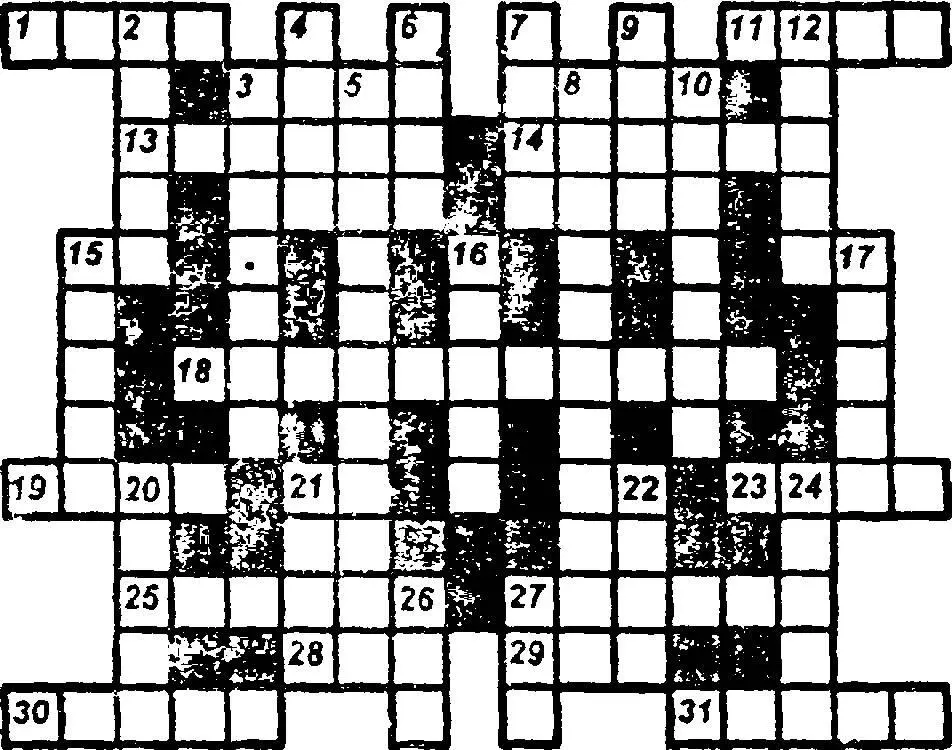
treats people. 28. The drink made by pouring boiling water on dried leaves bearing the same name,
often used as a tonic. 29. A coloured liquid used for writing with a pen. 30. Take one's clothes off.
31. Come into two or more parts; crack a bone, joint.
Down
2. Breathing organs found in man and animal. 3. Take air into the body and send it out. 4.
Exist. 5. The degree of heat or cold in the air, water, body, etc. 6. Be still, relax after work, efforts,
etc. 7. Small spots (red or pink) close together on the skin (usu. a symptom of a disease). 8.
Difficulty in digesting food. 9. Be aware through the senses. 10. A catching disease marked by fever
and small spots that cover the whole body (common among children). 12. Give medical care to
people in order to cure them. 15. A high temperature. 16. The red liquid in the body. 17. The regular
beating of the arteries as the blood is forced along them. 20. An open sore (язва, нарыв) on internal
organs. 21. A special choice of food ordered by a doctor. 22. Ill, unwell. 24. A person specially
trained to look after sick people. 26. A short sleep. 27. Not clearly seen.
UNIT THREE
SPEECH PATTERNS
1.You like the way they work.
I like the way the doctor treats the child. Do you like the way she wears her hat? I don't like
the way you speak to me. The teacher didn't like the way the children behaved in class.
2. It is always interesting for tourists to take a trip along the Thames in a boat.
It was difficult for the students to make notes of his lecture.
It will be convenient for you to live in our hostel.
It would be useful for him to give up smoking.
It would have been natural for the sick man to fall asleep after the injection.
EXERCISES
I. Say whether you like or dislike the way:
1. the doctor treated the boy (in the story "A Day's Wait");
2. the boy behaved during his illness;
3. Hemingway described the boy's mood;
4. you spent your summer holidays;
5. the students of your group work at their English;
Читать дальшеИнтервал:
Закладка:
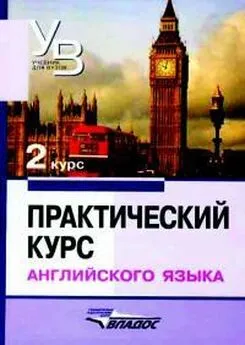
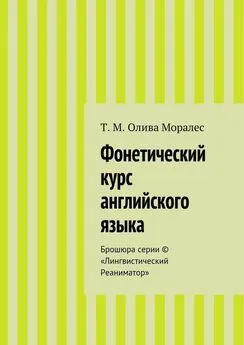
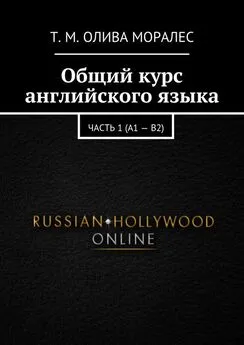

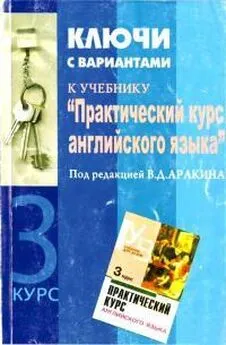
![Владимир Аракин - Практический курс английского языка 3 курс [calibre 2.43.0]](/books/1072035/vladimir-arakin-prakticheskij-kurs-anglijskogo-yazyk.webp)




